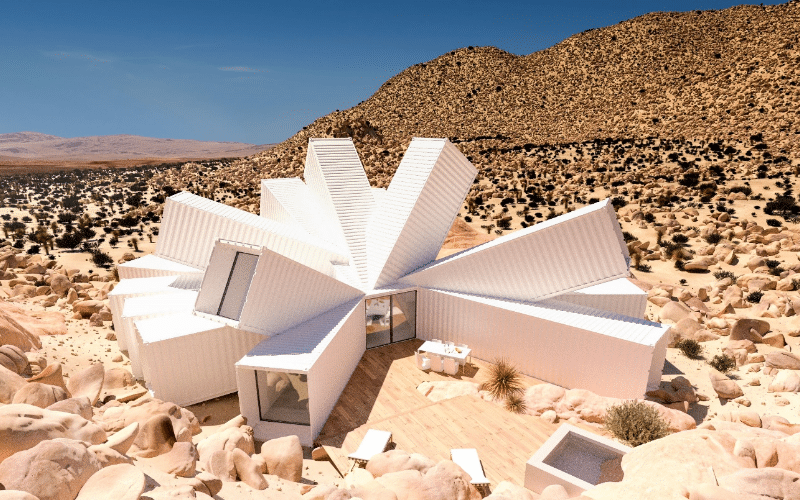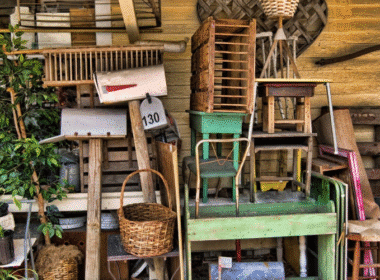DIY shipping container homes are the affordable, eco-friendly way to live in 2025—and my friend flips them for a living. Stick around ‘til the end to see before-and-after pics of his most stunning build yet.
Why Container Homes Are Awesome
There are a bunch of reasons people love container homes, and no, it’s not just because they sound edgy.
Think of a shipping container home as a blank canvas made of steel. Originally used to transport cargo, these containers get a second life as fully functional, livable spaces.
Here’s why they’re getting so much attention:
1. Eco-Friendly Living
- Recycles steel containers that might otherwise be melted down.
- Reduces the need for traditional building materials like wood and concrete.
- Perfect for anyone who wants a house that’s easier on the planet.
2. Affordable & Quick to Build
- Buying and converting a container is usually cheaper than building a traditional home.
- Construction is faster—think weeks instead of months—saving on labor costs.
- Great for housing in areas with high construction prices or shortages.
3. Design Flexibility
- Stack containers, add big windows, or create rooftop decks.
- Interiors can be rustic, modern, or totally customized—think cedar siding, shiplap, or sleek white cabinets.
- You can add Murphy beds, floating shelves, bar tops, and even pendant lights hanging through rustic beams.
4. Portability
- Unlike a regular house, a container home can move with you.
- Ideal for temporary living, relocating for work, or adventurous lifestyles.
What Goes into a Shipping Container Home
I recently got a peek at a real project, and wow—these things are impressive. One team converted four 40-foot containers and two 20-foot containers into four homes!!
Here’s a breakdown:
Living Spaces
- Mini-split AC units keep things cool without taking up a ton of room.
- A Murphy bed doubles as a sofa for maximum space-saving.
- Rustic wood beams give it that “cabin in the mountains” vibe, and all-glass entry doors make the place feel huge.
Kitchens
- Countertops can be butcher block—or go fancier like Kolkat stone.
- Floating shelves maximize storage without crowding the space.
- A bar-top seating area doubles as a mini workspace or breakfast nook.
Bathrooms
- Compact, clean, and efficient. Most use subway tile and glass shower doors.
- Fixtures like oil-rubbed bronze and rustic barn doors add personality.
Bedrooms
- Queen beds fit comfortably thanks to clever framing techniques that widen the interior by a few inches.
- Built-in pendant lights, nightstands, and big windows make the space feel open.
Outdoor Features
- Rooftop decks, cedar siding, and awnings provide a mix of style and practicality.
- Perfect for communities in scenic spots—think mountain views or lakeside vibes.
Utilities
- Standard water, power, and sewage hookups.
- HVAC units can heat and cool efficiently even in two-story setups.
- Optional features like hot tubs can be plugged in with dedicated sub-panels.
How Much Does a DIY Shipping Container Cost?
Let’s say you’re building a single 20-foot container home—cozy, beginner-friendly, and perfect for a DIY project.
Ballpark Breakdown of Shipping Container Home Costs:
Used 20-ft Container – $2,500:
Look for one in good shape, free from chemicals or heavy rust.
Foundation / Site Prep – $1,000:
Simple concrete blocks or piers work perfectly for a single container.
Insulation & Weatherproofing – $1,500:
Spray foam or recycled denim; includes lining the interior for comfort and energy efficiency.
Windows & Doors – $1,200:
Consider salvaged or DIY-friendly options—they can save hundreds.
Plumbing & Bathroom – $1,000:
Basic shower, toilet, and sink; DIY hookups help cut costs.
Electrical & Lighting – $800:
Includes basic wiring, outlets, and energy-efficient lights.
Kitchen Essentials – $1,000:
Counter, sink, mini-fridge, and storage. Using salvaged cabinets can save even more.
Flooring & Paint – $700:
Laminate or recycled wood flooring, plus paint for walls.
Furniture & Storage – $800:
DIY or second-hand Murphy bed, shelves, and chairs maximize space.
Miscellaneous / Tools / Contingency – $1,500:
Extra screws, nails, tool rentals, and unexpected costs.
Total DIY Budget: ~$11,000
A fraction of what a traditional small home would cost, and you get full customization and eco-friendly living!
For a comparison, a traditional small home can easily cost $150,000+ before furniture, utilities, and landscaping.
A DIY container home saves over $130,000 if you do most of the work yourself.
DIY Shipping Container Home on a Budget
If you want a shipping container home but don’t want to drain your savings, here’s how to do it the smart, money-saving way.
1. Start with the Right Container
- Used is Cheaper: A 20- or 40-foot used shipping container can cost $2,000–$5,000, way less than buying new.
- Check for Damage: Look for rust, holes, or structural damage—fixing big problems can get expensive.
- Avoid Hazardous Containers: Make sure it’s free of chemicals, oils, or other dangerous residues.
2. Keep Your Design Simple
- Start Small: A single container or two stacked is cheaper than four or five.
- Open Floor Plans: Fewer interior walls = less framing and less material.
- DIY Layout: Plan your kitchen, bathroom, and bedroom placements to save plumbing and wiring costs.
3. Use Recycled and Salvaged Materials
- Cabinets, flooring, doors, windows, and even sinks can be found at Habitat for Humanity ReStores or local salvage yards.
- Old wood, metal, and tiles can be repurposed to give your home a cool, rustic look without spending hundreds on new materials.
4. Do the Work Yourself (as Much as You Can)
- Learn the Basics: Watch YouTube tutorials on welding, framing, and insulation.
- Ask for Help: Friends and family can help with painting, insulation, or finishing touches.
- Save on Labor: Hiring professionals can double your budget, so doing some work yourself saves thousands.
5. Save on Utilities and Insulation
- Insulation is Key: Proper insulation keeps heating/cooling costs down. Spray foam or recycled denim insulation works well.
- Energy-Efficient Appliances: Small, energy-saving appliances cut electricity costs.
- Solar Panels (Optional): If you can swing it, a small solar setup reduces long-term bills.
6. Make it Income-Ready
Even if you plan to live there, designing your container home so it can be rented later can help recoup costs:
- Airbnb-ready: Simple, stylish interiors with lots of natural light.
- Tiny home communities: You could rent your container in a cluster of tiny homes.
- Seasonal rentals: Perfect for lakeside, mountain, or urban spots.
7. Plan for Permits and Regulations
- Check your local building codes early—they can impact your design and save you money in the long run.
- Some areas require foundations, inspections, or electrical approvals—planning ahead prevents fines and delays.
8. Upgrade Slowly
- Start with the essentials: a bed, kitchen, bathroom, and basic furniture.
- Add finishing touches later: decks, extra storage, or fancy lighting.
- This “phase it in” approach lets you spread costs over time.
A DIY shipping container home doesn’t have to cost a fortune. With used containers, recycled materials, smart design, and a bit of elbow grease, you can build a stylish, eco-friendly home while saving thousands.
Plus, you can even make some of that money back by renting it out 😊
DIY Shipping Container Home vs Traditional Small Home Costs
Structure & Build
- DIY Container Home: $2,500–$6,000
- Traditional Small Home: $120,000+
Foundation & Site Prep
- DIY Container Home: $1,000
- Traditional Small Home: $15,000+
Insulation & Weatherproofing
- DIY Container Home: $1,500
- Traditional Small Home: $10,000+
Windows & Doors
- DIY Container Home: $1,200
- Traditional Small Home: $10,000+
Plumbing & Bathroom
- DIY Container Home: $1,000
- Traditional Small Home: $8,000+
Electrical & Lighting
- DIY Container Home: $800
- Traditional Small Home: $5,000+
Kitchen
- DIY Container Home: $1,000
- Traditional Small Home: $12,000+
Flooring & Paint
- DIY Container Home: $700
- Traditional Small Home: $5,000+
Furniture & Storage
- DIY Container Home: $800
- Traditional Small Home: $10,000+
Misc / Tools / Contingenc
- DIY Container Home: $1,500
- Traditional Small Home: $5,000+
Total Cost
DIY Container Home: ~$11,000
Traditional Small Home: ~$190,000+
Building your own DIY container home could save a whopping $170,000+— all while giving you a space that’s eco-friendly, totally unique, and 100% your style. No wonder these little steel beauties are everywhere right now!
I mean, let’s face reality for a minute here. Have you looked at the new norm of housing prices lately?? All I can say is, WTF!
Shipping Container Homes are a clever, creative, and kind-of-fun way to skip the madness out there.
My advice? Stop dreaming and just go for it!
You’ve got nothing to lose. Worst case? You hate it. No sweat—because these babies hold their value like pros.
Seriously, if you give the DIY container life a shot and realize it’s not for you, no sweat. You could sell your container home and make (really good) money!
Instead of feeling the woes of “wasting money,” you will be making money from your shipping container home. And remember, this wasn’t just any home either. It was a cool, eco-friendly project you built yourself with your own two hands.
But hey, if you want, you can go back to your “normal” white picket fence life, sip your “normal” coffee on your “normal” porch, and keep playing the never-ending game of “Do I eat this month, or pay my bills?” Yep, that’s the new normal—money’s tight, bills are high, and they’ve got us right where they want us. So why not flip the script, with a shipping container home.
Build it yourself, save money, and take control instead of letting the system run your life.
Not many things let you have fun, learn a lot, and even make money if you change your mind—so that’s why these shipping container homes are a total win-win.
You don’t just save money—you get a home that screams you, not your bank account.
Tips to Cut Costs on Your DIY Shipping Container Home
1. Hunt for Used Materials
Don’t buy everything new! Check out salvage yards, Craigslist, Facebook Marketplace, or Habitat for Humanity ReStores. You can find windows, doors, cabinets, and even appliances for a fraction of the price.
2. Do It Yourself… Where You Can
Labor costs are huge in construction. The more you can safely do yourself—painting, flooring, basic plumbing and electrical (if allowed)—the more money you save. Just know your limits; don’t risk safety or building codes.
3. Keep It Simple
Fancy finishes, custom cabinets, or imported countertops are expensive. Stick to functional, clean designs: laminate counters, simple shelving, and pre-made fixtures. You can always upgrade later if you want.
4. Buy Containers Smart
Look for containers in good shape but don’t stress over cosmetic rust—it can be cleaned or painted. Avoid containers that carried chemicals or food items that could have caused contamination.
5. Insulate Wisely
Spray foam is great but pricey. Alternatives like recycled denim or sheep wool are cheaper and eco-friendly. Also, focus insulation on high-heat or high-cold areas, not every square inch.
6. Mix and Match Fixtures
Salvaged sinks, faucets, and light fixtures can give your home character without breaking the bank. Sometimes second-hand stuff is even cooler than brand new.
7. Plan for Multi-Purpose Spaces
Think Murphy beds, fold-out tables, and shelves that double as storage. Smaller spaces = less material = less money spent.
8. Learn from Others
Join online DIY container home forums, YouTube channels, and Facebook groups. You’ll get tips on cheap materials, tricks to avoid mistakes, and even discounted tools or leftover supplies from other builders.
9. Rent Tools Instead of Buying
Some tools you’ll only need once or twice. Tool rental shops or borrowing from friends saves big bucks compared to buying everything new.
10. DIY Utilities (Where Legal)
If local codes allow, doing some of your own plumbing or wiring (or hiring a handy friend) can cut costs dramatically. Just make sure it’s safe and inspected if required.
11. Be Patient & Shop Around
Don’t rush to buy everything at once. Take your time, wait for sales, and compare prices. A few months of patience can save hundreds, maybe thousands.
12. Reuse & Repurpose
Old pallets, crates, and leftover materials from other projects can be repurposed for shelving, wall paneling, or outdoor decks. Your budget—and the planet—will thank you.
12 Longevity Tips for Your DIY Shipping Container Home
Keeping your container home looking great and lasting for decades isn’t hard—but it does take a little attention.
How to Make Your Shipping Container Home Last Longer Than the Zombie Apocalypse
1. Protect Against Rust
Steel is strong, but rust can sneak in at seams and scratches.
- Use a rust-inhibiting primer and exterior paint
- Check your home every few months
- Touch up any scratches or bare spots
2. Insulate Properly
Steel gets super, super hot in summer and freezing in winter.
- Spray foam, recycled denim, or rigid panels work best
- Focus on the roof and floor, the hottest and coldest spots
3. Maintain Good Airflow
Poor ventilation can lead to mold, mildew, and condensation.
- Add vents near the roof and floor
- Consider a dehumidifier in humid areas
- Use small fans in bathrooms and kitchens
4. Seal Windows & Doors
Gaps can cause rust and water damage.
- Apply weatherstripping to doors and windows
- Use silicone caulk on panel seams
- Inspect seals regularly for cracks
5. Avoid Water Pooling on the Roof
Flat roofs can trap water and cause leaks.
- Add a slight slope to the roof
- Use waterproof membranes or sealants
- Clear debris after storms
6. Maintain Your Foundation
Even a steel container needs a stable base.
- Inspect piers, blocks, or concrete pads every year
- Make sure your home is level to prevent warping
7. Protect Against Sun Damage
Sunlight can fade paint and damage finishes.
- Apply UV-protective paint or coatings
- Add shade with plants, awnings, or rooftop structures
8. Keep Gutters and Drainage Clear
Water is the biggest enemy of a container home.
- Install gutters that direct water away from the foundation
- Remove leaves, dirt, and ice regularly
9. Check Structural Modifications
Cutting openings for windows or doors weakens the structure.
- Reinforce with steel or structural beams
- Recheck welds, screws, and reinforcements yearly
10. Plan for Easy Repairs
Make it simple to fix things when needed.
- Use removable or modular interior walls
- Keep panels, wiring, and plumbing accessible
11. Maintain HVAC and Utilities
Comfort and efficiency go hand-in-hand.
- Clean filters and check for leaks
- Service HVAC or mini-split units seasonally
12. Keep a Maintenance Checklist
Small issues now prevent big problems later.
- Schedule monthly, quarterly, and yearly inspections
- Track repairs and upgrades to stay on top
The truth is, with proper care, container homes can last a solid 25+ years or more, without any major repairs whatsoever!
Luxury & Fun Upgrades for Your DIY Shipping Container Home
Thinking of taking your container home from “cool” to “wow”?
These upgrades are practical, fun, and can make your small space feel bigger and more luxurious.
- Rooftop Gardens – Grow your own veggies, herbs, or flowers while enjoying a relaxing hangout spot. Perfect for city views or lakeside vibes.
- Solar Panels – Save on electricity and go off-grid with solar power. Eco-friendly and money-saving!
- Hidden Furniture – Install Murphy beds, fold-down desks, or pull-out tables to make every square foot count.
- Lofts & Mezzanines – Create extra sleeping or storage areas without adding square footage. A loft can feel like a tiny treehouse inside your home.
- Pet-Friendly Spaces – Custom nooks for cats or dogs, built-in feeding stations, or even a little climbing wall for feline fun.
- Outdoor Living Areas – Add a deck, awning, or pergola for dining and entertaining outside without leaving home.
- Smart Home Features – Install smart lights, thermostats, or security cameras to make your tiny space feel high-tech.
- Water Features – A small fountain or wall-mounted waterfall adds zen vibes without taking up much room.
- Creative Storage – Built-in shelves, under-bed drawers, or hidden compartments keep clutter away and make your home feel bigger.
- Custom Lighting – Pendant lights, LED strips, or fairy lights make your space cozy, bright, and Instagram-ready.
- Unique Exterior Finishes – Cedar siding, metal panels, or paint accents turn a simple steel box into a design statement.
- Portable Additions – Rolling carts, movable planters, or modular furniture let you reconfigure your space as needed.
These extras aren’t just for show—they make living small feel spacious, fun, and functional. You can pick a few or GO ALL OUT and create the container home of your dreams.
Think of it as a blank canvas where your personality sets the rules—tiny but mighty!
Mistakes to Avoid When Building Your DIY Shipping Container Home
So, you’re pumped about turning a steel box into your dream home. Awesome. But let’s be real—there are some traps that can turn this DIY adventure into a total nightmare.
Avoid these like your life depends on it:
❌ Skipping Proper Insulation
Steel gets hot enough to fry an egg in summer and cold enough to make you question your life choices in winter. Don’t skip insulation—or you’ll be sweating and shivering at the same time.
❌ Ignoring Rust Prevention
A little scratch today can turn into a full-blown rust party tomorrow. Protect your container with primer, paint, and regular check-ups, or face a lot of “why didn’t I do this?” moments.
❌ Poor Ventilation
Condensation, mold, mildew…yep, they’ll move in if your airflow sucks. Make sure you have vents, fans, or a dehumidifier, unless you enjoy living in a damp, smelly science experiment.
❌ Cheaping Out on the Foundation
Your container is basically a giant metal lego. Build it on a weak foundation and suddenly your dream home feels like a wobbly nightmare. Concrete blocks, piers, or pads are worth every penny.
❌ Messing with Plumbing or Electrical
DIY is fun—but not when you flood your floor or shock yourself. Measure twice, plan carefully, and don’t be afraid to call a pro for the tricky stuff.
❌ Ignoring Local Building Codes
Permits, inspections, zoning—they sound boring, but skipping them can cost you big time. Check early so your container doesn’t become a very expensive scrap metal sculpture.
❌ Underestimating Space Needs
Tiny home = tiny problems if you don’t plan storage and furniture wisely. Think clever nooks, lofts, and multipurpose furniture before your stuff takes over your whole house.
❌ Skipping Maintenance Planning
Even the coolest container home needs love. Schedule rust checks, roof inspections, and HVAC maintenance, or your dream could turn into a DIY horror story.
❌ Trying to DIY Everything
Some stuff is better left to pros—welding, big structural changes, complicated wiring. You’ll thank yourself later.
❌ Forgetting About Resale Value
Even if this is your forever home, plan ahead. Good windows, decks, and finishes can help you cash in if you ever decide to move on.
Planning ahead saves money, stress, and a lot of “why did I do this?” moments.
Are Shipping Container Homes Worth It?
Um, Heck yeah!
Affordable, unique, eco-friendly, and potentially profitable—DIY container homes are an all-around win-win, especially if you’re ready to get creative.
✔️ Big Savings: DIY container homes cost ~$11k–$20k vs $180k+ for a traditional small house. That’s a lot of extra cash in your pocket.
✔️ Eco-Friendly: You’re recycling steel and cutting construction waste. Mother Earth approves.
✔️ Flexible & Creative: Stack them, add lofts, rooftop gardens, or secret nooks. Your home = your rules.
✔️ Potential Income: Airbnb hot spots love tiny homes. Your DIY project could pay for itself—or more.
✔️ Caveats: Downsizing is necessary. Check local permits and zoning rules before starting.
If you care about saving money, helping the planet, and making a home that’s totally your style, shipping container homes are an easy win.
Plus, they also make awesome Airbnb rentals or tiny home communities because you can stack them and make lots of units without wasting space.
How to Start Your Own Shipping Container Home
If you’ve been daydreaming about turning a steel box into your dream home:
- Research—watch tutorials, explore DIY workshops, visit local container communities.
- Plan—sketch layouts, think about storage, plumbing, and insulation.
- Check Codes—verify zoning, permits, and HOA rules if applicable.
- Decide—DIY conversion or hire a contractor. Many builders now offer turnkey options or workshops to guide you.
DIY Shipping Container Home Build
This isn’t my build (I wish), but it’s probably as close as I’ll ever get—so let’s just pretend for a second, okay? All the credit goes to my ridiculously creative friend Michael, who treats DIY like it’s a full-time Olympic sport. This guy has been obsessed with shipping container homes since the day I met him.
He eventually moved back to the States (we first met in Canada—yep, that’s where (where I live), and even though we don’t see each other anymore, we keep in touch with the occasional “hey, check this out” text. So when he randomly messaged me pictures of his latest shipping container home flip, I knew right away—this had blog post written all over it.
Why? Because this blog is all about making and saving money—and Michael’s build checks both boxes. DIY shipping container homes? That’s saving money. Flipping them for a profit? That’s making money. Total double win.
So today, I’m sharing some shots of his latest DIY shipping container home flip to give you a little inspo. Whether you’re daydreaming about building your own or curious about the flipping side of things, just know there’s a lot of profit potential here (Michael’s proof).
Alright—enough talk. Let’s drool over the pics, shall we?
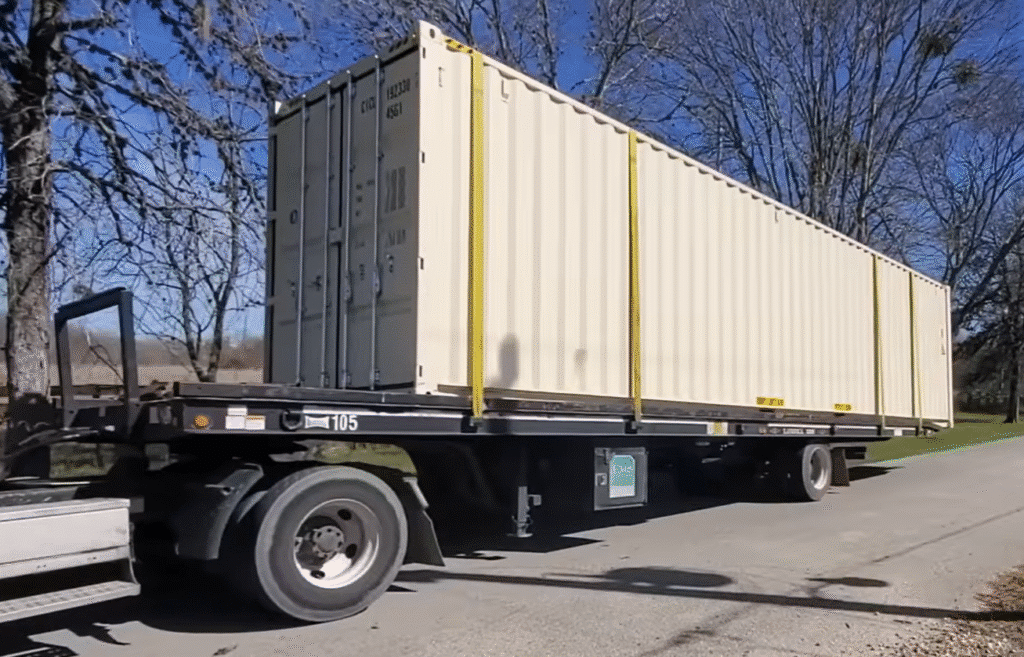
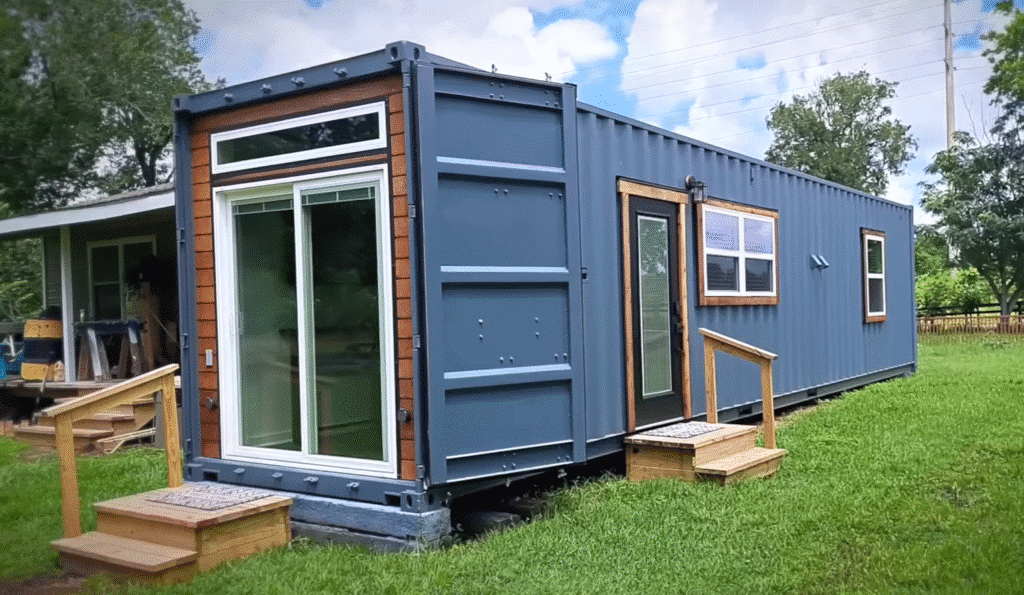
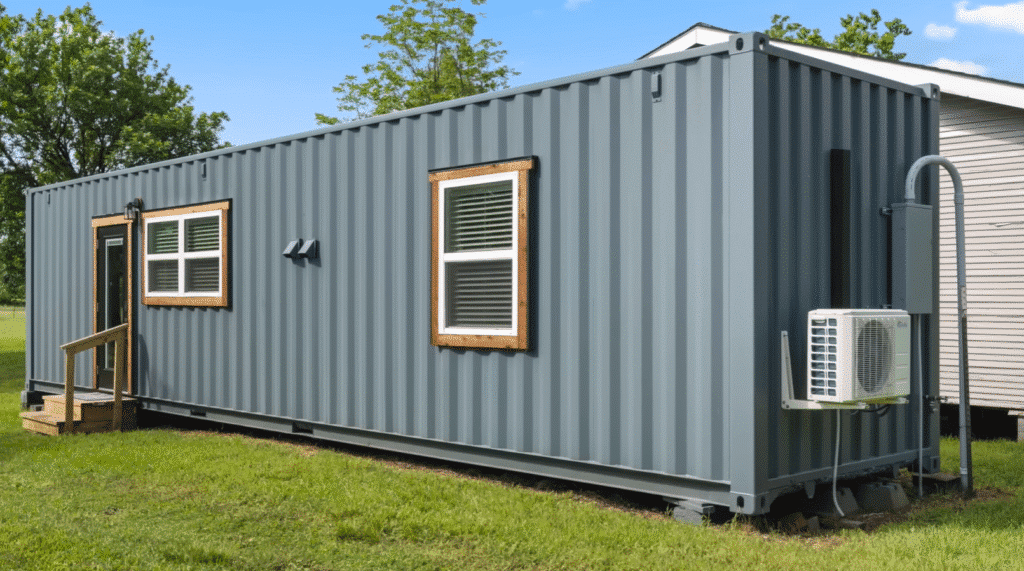
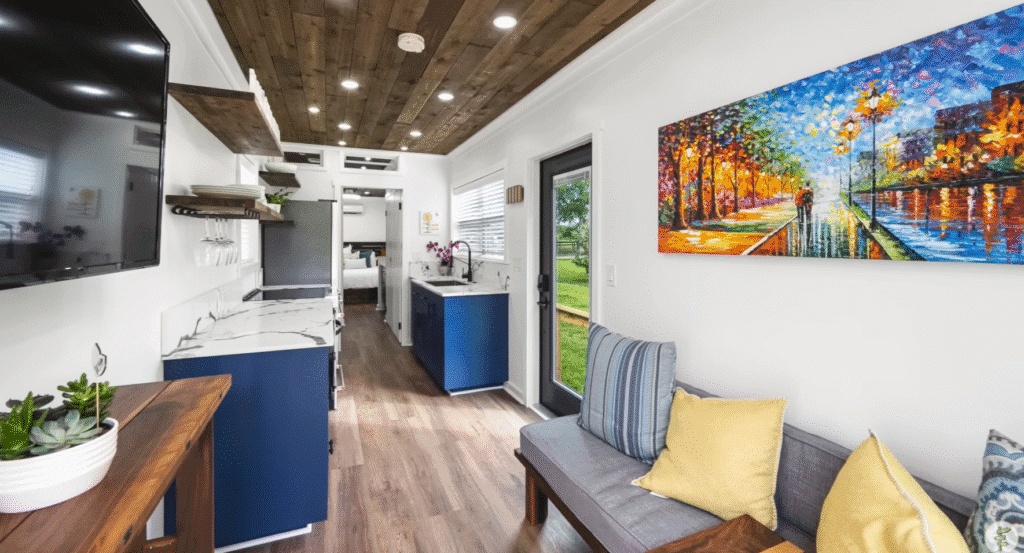
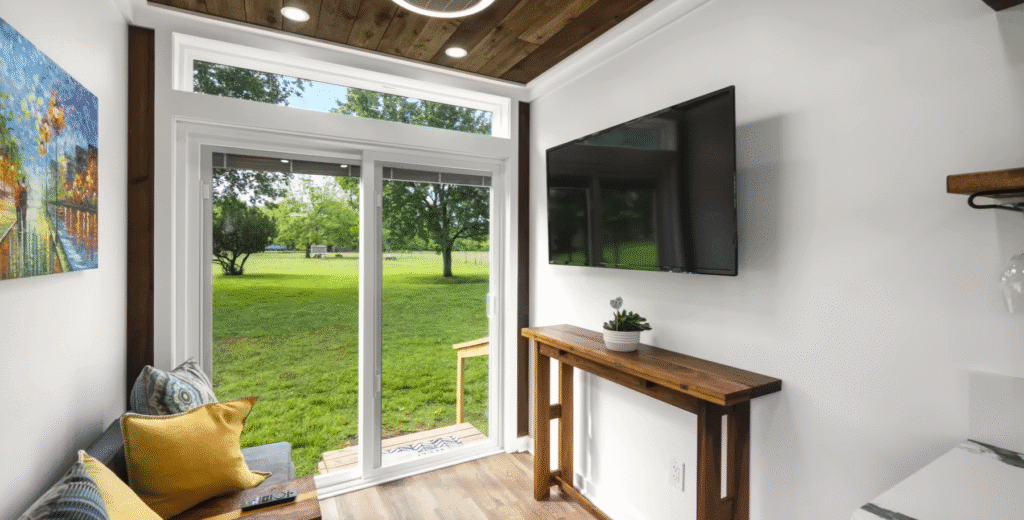
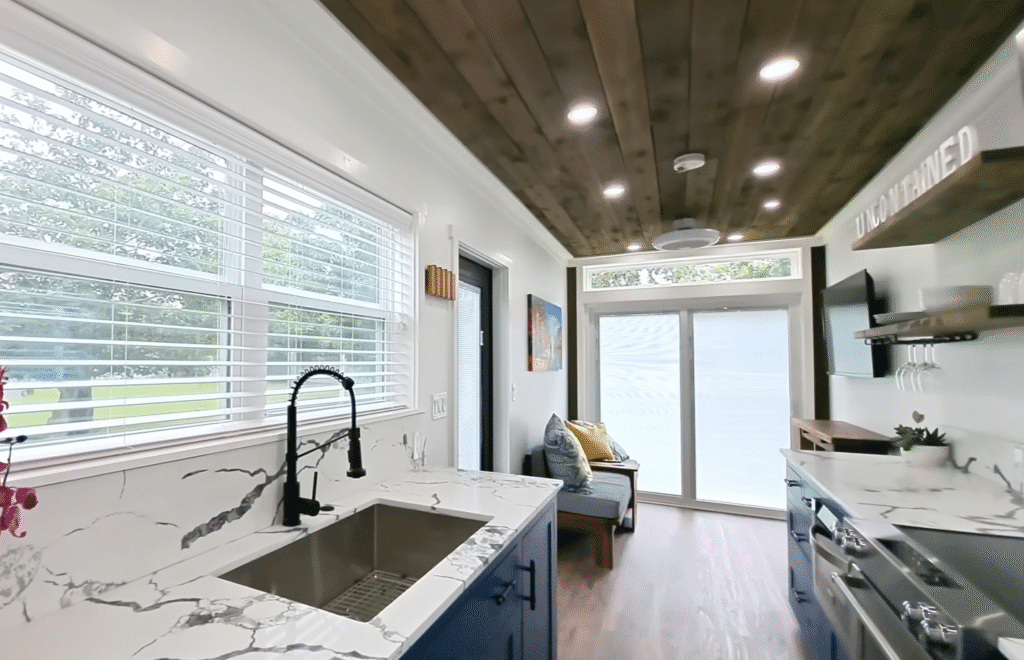
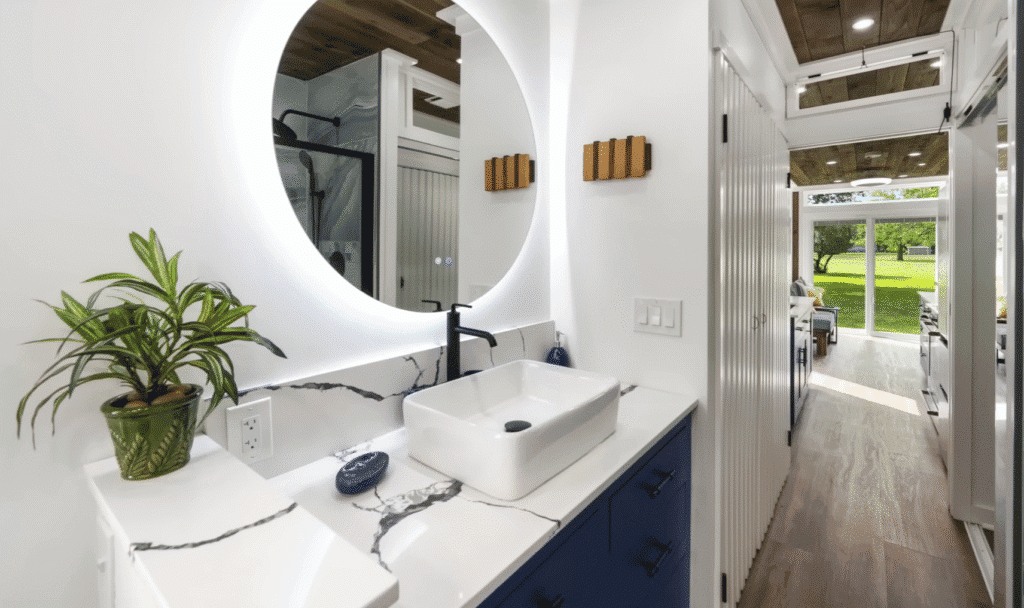
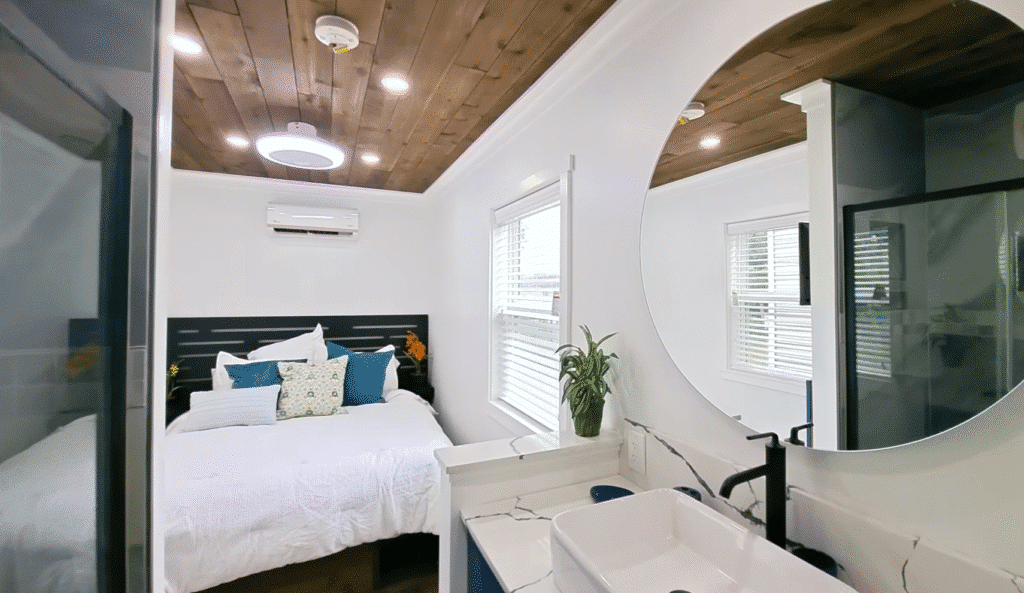
#1 DIY Shipping Container Home Resource
If you’ve ever thought about turning a shipping container into a home (or flipping one for profit), let me save you some serious time and frustration. My friend Michael pointed me toward a guide that he swears by—it’s called Shipping Container Home Made Easy.
Now, full disclosure: this isn’t my product (nor is it Michaels!) and honestly, you don’t need to buy anything if you don’t want to. The internet has plenty of free info—you just have to dig through a lot of junk to find the good stuff.
But if you’d rather skip the endless Googling and YouTube rabbit holes, this guide lays everything out in one place. It’s basically the shortcut Michael says he wishes he had when he got started.
It’s a paid product but through my link below you’ll get $10 off ($37) Plus, it’s 100000% fully guaranteed—so if you try it and decide it’s not for you, you get your money back. No stress.
What I love about this guide is that it covers everything: planning, building, design details, and the little “gotchas” you don’t realize until you’re knee-deep in a project. And it’s written by Adam Ketcher, who’s been building shipping container homes for years. So instead of piecing together a dozen random blogs and videos, you’re learning from someone who’s been there, done that.
If you’re serious about getting started, I’d say this is the easiest way to do it. If not, no worries—you’ve still got the internet. But if you want the fast track? This is it.
👉 Check out Shipping Container Home Made Easy here – $10 off link
Shipping Container Homes FAQ
Are shipping container homes legal?
A: Most places allow them but check local building codes and zoning laws first.
How much does it cost to build a container home?
A: Typically, a lot less than a traditional home, but it depends on materials, finishes, and whether you DIY or hire contractors.
Can I stack containers for a multi-story home?
Yes! Containers are designed to be stacked safely, allowing for creative multi-level layouts.
Are container homes energy-efficient?
With proper insulation, HVAC systems, and energy-conscious design, container homes can be very efficient.
Can I live in a container home year-round?
Absolutely—just ensure it’s well-insulated and has reliable heating and cooling.
Can a container home make money as a rental?
Yes! Many owners rent them on Airbnb or tiny home communities for a solid passive income stream.
Interested in turning your DIY shipping container home into a AirBNB Business? It’s possible! Check out my other post on how to start a Airbnb business without money.




